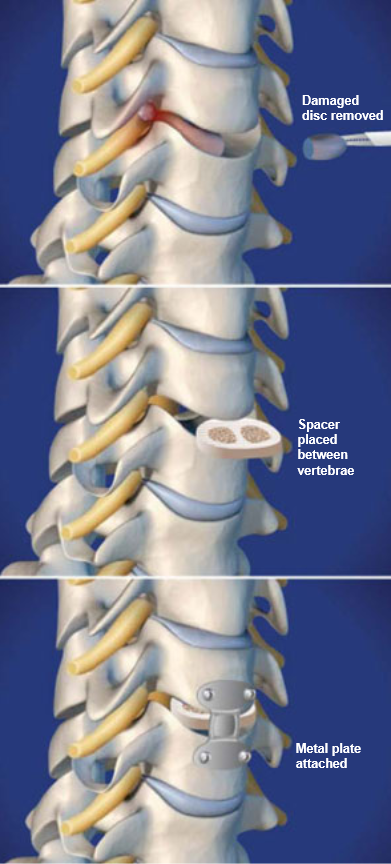
Innovative solutions are causing a shift in mindset in contemporary medicine, and cervical spacers are outstanding in spinal treatment. In this article, we will take a closer look at cervical spacers, analyzing how they work and exploring their uses, advantages, and prospective influence on patient outcomes.
Understanding Cervical Spacers
What is a Cervical spacer?
The cervical spine is the spinal column that runs along the back of the neck. A variety of medical specialties make use of spacers, which are devices for establishing and maintaining specific distances between structures.
A spacer can help keep the distance between vertebrae constant or relieve pressure on a nerve during spinal surgery.
Medical devices intended for use in the cervical spine may include a cervical spacer. One example is cervical disc surgery, which involves implanting a spacer or artificial disc between two cervical vertebrae to replace a damaged or degenerative disc. This provides stability and can reduce symptoms like pain or numbness.
The Need for Innovation
Several issues, reflecting difficulties and limitations in conventional methods of treating cervical spine diseases, need new approaches to cervical spacers in contemporary medicine. Here are some concrete reasons why innovation is needed, given out in detail:
1. How traditional treatments arrive
Spinal fusion and other invasive surgical procedures are common in conventional cervical spine treatments, and they come with a lot of risks, such as long recovery times and extensive wounds.
Greater discomfort after surgery, lengthier hospital stays, and more time spent rehabbing are all possible outcomes of these invasive operations.
2. Longer recovery time
Patients’ ability to go about their everyday lives and their quality of life are both negatively impacted by the long recovery periods required by conventional cervical spine procedures.
Lengthy recuperation times may make patients unwilling to get the therapies they need, which might postpone interventions and even make their problems worse.
3. A growing number of cervical spine conditions
Causes, including sedentary lifestyles and an aging population, are leading to an increase in the number of cervical spine problems such as disc degeneration and herniation.
Healthcare systems are facing a mounting challenge due to the rising prevalence, which calls for treatment solutions that are both efficient and effective.
4. Drawbacks of fusion procedures
There are cervical spine problems that traditional fusion surgeries can fix, but they can also restrict your natural mobility in that region.
Reduced mobility can significantly influence patients’ quality of life, especially when it comes to their ability to participate in everyday activities and recreation opportunities.
Mechanism and Technology
Composition of the Spacers
It is common practice to use biocompatible materials in the construction of cervical spacers. This reduces the possibility of side effects and guarantees that the product is compatible with the body.
The Importance of Spinal Alignment Maintenance
The use of cervical spacers is essential for preserving the cervical spine’s normal position. They stop spinal abnormalities from developing by giving stability between vertebrae.
Compatible with MRI
These days, you may get cervical spacers that work with magnetic resonance imaging (MRI). This function enables medical personnel to track the patient’s recovery after surgery and evaluate the spacer’s effectiveness without further procedures.
Fusion with metabolic bone
Cervical spacers use technology that helps them integrate with the surrounding bones. Doing so promotes the body’s healing mechanisms and helps the spacer remain stable over time.
Applications in Modern Medicine
Cervical spacers have multiple uses in contemporary medicine, from treating individual spinal disorders to facilitating less invasive treatments and facilitating collaboration between disciplines in the service of overall patient care. These are more applications as listed below.
- Orthopedic and Neurological Collaboration
- Instability Correction
- Alternative to Fusion
- Reconstructive Spinal Surgery
- Revision Surgery Support
- Joint Preservation
- Herniated Disc Treatment
Benefits and Outcomes
In contemporary medicine, cervical spacers have several advantages, such as lowering postoperative discomfort and invasiveness, maintaining spinal alignment, and offering individualized treatments for a variety of cervical spine disorders. ‘
- Cervical spacers provide minimally invasive techniques, in contrast to invasive operations. By putting the patient first, we may reduce their impact, use fewer incisions, and speed up their recoveries.
- Cervical spacers are important for preserving or reestablishing the neck’s natural range of motion. This functional improvement has an important impact on patients’ day-to-day lives, which in turn improves their quality of life.
- When compared to more conventional operations, patients who undergo cervical spacer surgeries typically report reduced postoperative discomfort. With less pain, healing goes more easily and more comfortably.
- Using cervical spacers helps maintain healthy and stable spines by preventing abnormalities.
- Cervical spacers provide an alternative to the conventional procedures of fusion. They provide functional considerations that can be especially helpful for some patients while preserving segmental mobility.
- Patients with disc-related diseases have better outcomes due to the accuracy of therapy, which tackles particular abnormalities.
- Less time spent recovering is a direct result of the effectiveness of rehabilitation in minimally invasive treatments. The faster the patient can return to their regular routine, the happier they will be.
- Cervical spacers provide personalized treatment techniques, leading to customizable patient outcomes.
Future Developments and Real-world Impact
While the real-world impact of cervical spacer technology is represented in improved patient experiences, decreased healthcare costs, and larger societal advantages, future improvements in cervical spacer technology seek to improve and broaden treatment choices.
Wrapping It Up
As we look to the future, we can see that the continual advancements in cervical spacer technology hold the prospect of ever-better therapies. The trajectory indicates that there will be ongoing improvements in patient care and outcomes, with a particular concentration on developing innovative materials, precision surgical procedures, and smart implant technologies.

